1. Ahn K. The role of air pollutants in atopic dermatitis. J Allergy Clin Immunol. 2014; 134(5):993–999. PMID:
25439225.

2. Yon DK, An J, Ha EK, Jee HM, Izuhara K, Ono J, et al. Serum periostin is negatively correlated with exposure to formaldehyde and volatile organic compounds in children. Allergy Asthma Immunol Res. 2018; 10(6):716–721. PMID:
30306752.

3. Lee KS. Trends in prevalence of allergic diseases in Korean children: how and why? Clin Exp Pediatr. 2020; 63(7):263–264. PMID:
32299180.

4. Lee JT. Review of epidemiological studies on air pollution and health effects in children. Clin Exp Pediatr. 2021; 64(1):3–11. PMID:
32517422.

5. Herbarth O, Fritz GJ, Rehwagen M, Richter M, Röder S, Schlink U. Association between indoor renovation activities and eczema in early childhood. Int J Hyg Environ Health. 2006; 209(3):241–247. PMID:
16490398.

6. Rolle-Kampczyk UE, Rehwagen M, Diez U, Richter M, Herbarth O, Borte M. Passive smoking, excretion of metabolites, and health effects: results of the Leipzig’s Allergy Risk Study (LARS). Arch Environ Health. 2002; 57(4):326–331. PMID:
12530599.

7. Kim J, Kim H, Lim D, Lee YK, Kim JH. Effects of indoor air pollutants on atopic dermatitis. Int J Environ Res Public Health. 2016; 13(12):1220.

8. Choi H, Schmidbauer N, Sundell J, Hasselgren M, Spengler J, Bornehag CG. Common household chemicals and the allergy risks in pre-school age children. PLoS One. 2010; 5(10):e13423. PMID:
20976153.

9. Araki A, Kanazawa A, Kawai T, Eitaki Y, Morimoto K, Nakayama K, et al. The relationship between exposure to microbial volatile organic compound and allergy prevalence in single-family homes. Sci Total Environ. 2012; 423:18–26. PMID:
22405561.

10. Kwon JH, Kim E, Chang MH, Park EA, Hong YC, Ha M, et al. Indoor total volatile organic compounds exposure at 6 months followed by atopic dermatitis at 3 years in children. Pediatr Allergy Immunol. 2015; 26(4):352–358. PMID:
25868723.

11. Nurmatov UB, Tagiyeva N, Semple S, Devereux G, Sheikh A. Volatile organic compounds and risk of asthma and allergy: a systematic review. Eur Respir Rev. 2015; 24(135):92–101. PMID:
25726560.

12. Ha EK, Kim JH, Lee SW, Jee HM, Shin YH, Baek HS, et al. Atopic dermatitis: correlation of severity with allergic sensitization and eosinophilia. Allergy Asthma Proc. 2020; 41(6):428–435. PMID:
33109308.

13. Kunz B, Oranje AP, Labrèze L, Stalder JF, Ring J, Taïeb A. Clinical validation and guidelines for the SCORAD index: consensus report of the European Task Force on Atopic Dermatitis. Dermatology. 1997; 195(1):10–19.

14. Ahn SH, Yoon W, Lee SY, Shin HS, Lim MY, Nam YD, et al. Effects of
Lactobacillus pentosus in children with allergen-sensitized atopic dermatitis. J Korean Med Sci. 2020; 35(18):e128. PMID:
32383366.

15. Wahn U, Warner J, Simons FE, de Benedictis FM, Diepgen TL, Naspitz CK, et al. IgE antibody responses in young children with atopic dermatitis. Pediatr Allergy Immunol. 2008; 19(4):332–336. PMID:
18422892.

16. Shin HS, Ahn HS, Lee BH. Determination of thiazolidine-4-carboxylates in urine by chloroformate derivatization and gas chromatography-electron impact mass spectrometry. J Mass Spectrom. 2007; 42(9):1225–1232. PMID:
17610311.

17. Franklin PJ. Indoor air quality and respiratory health of children. Paediatr Respir Rev. 2007; 8(4):281–286. PMID:
18005895.

18. Youm S, Lee E, Lee J. Environmental and dietary factors to be checked for treatment of atopic dermatitis in rural children. Clin Exp Pediatr. 2021; 64(12):661–663. PMID:
34607406.

19. Sabatini L, Barbieri A, Indiveri P, Mattioli S, Violante FS. Validation of an HPLC-MS/MS method for the simultaneous determination of phenylmercapturic acid, benzylmercapturic acid and o-methylbenzyl mercapturic acid in urine as biomarkers of exposure to benzene, toluene and xylenes. J Chromatogr B Analyt Technol Biomed Life Sci. 2008; 863(1):115–122.

20. Janasik B, Jakubowski M, Wesołowski W, Kucharska M. Unmetabolized VOCs in urine as biomarkers of low level occupational exposure. Int J Occup Med Environ Health. 2010; 23(1):21–26. PMID:
20442059.

21. Mohn CH, Blix HS, Halvorsen JA, Nafstad P, Valberg M, Lagerløv P. Incidence trends of atopic dermatitis in infancy and early childhood in a nationwide prescription registry study in Norway. JAMA Netw Open. 2018; 1(7):e184145. PMID:
30646341.

22. Williams H, Stewart A, von Mutius E, Cookson W, Anderson HR; International Study of Asthma and Allergies in Childhood (ISAAC) Phase One and Three Study Groups. Is eczema really on the increase worldwide? J Allergy Clin Immunol. 2008; 121(4):947–954.e15. PMID:
18155278.

23. Kim K. Influences of environmental chemicals on atopic dermatitis. Toxicol Res. 2015; 31(2):89–96. PMID:
26191377.

24. Kim EH, Kim S, Lee JH, Kim J, Han Y, Kim YM, et al. Indoor air pollution aggravates symptoms of atopic dermatitis in children. PLoS One. 2015; 10(3):e0119501. PMID:
25781186.

25. Pénard-Morand C, Raherison C, Charpin D, Kopferschmitt C, Lavaud F, Caillaud D, et al. Long-term exposure to close-proximity air pollution and asthma and allergies in urban children. Eur Respir J. 2010; 36(1):33–40. PMID:
20075054.

26. Kim J, Kim EH, Oh I, Jung K, Han Y, Cheong HK, et al. Symptoms of atopic dermatitis are influenced by outdoor air pollution. J Allergy Clin Immunol. 2013; 132(2):495–498.e1. PMID:
23763977.

27. Lee JH, Lee HS, Park MR, Lee SW, Kim EH, Cho JB, et al. Relationship between indoor air pollutant levels and residential environment in children with atopic dermatitis. Allergy Asthma Immunol Res. 2014; 6(6):517–524. PMID:
25374751.

28. Ohashi Y, Mamiya T, Mitani K, Wang B, Takigawa T, Kira S, et al. Simultaneous determination of urinary hippuric acid, o-, m- and p-methylhippuric acids, mandelic acid and phenylglyoxylic acid for biomonitoring of volatile organic compounds by gas chromatography–mass spectrometry. Anal Chim Acta. 2006; 566(2):167–171.

29. Choi W, Kim S, Baek YW, Choi K, Lee K, Kim S, et al. Exposure to environmental chemicals among Korean adults-updates from the second Korean National Environmental Health Survey (2012-2014). Int J Hyg Environ Health. 2017; 220(2 Pt A):29–35.

30. Yu G, Zhang Y, Wang X, Sai L, Bo C, Yeo AJ, et al. Thymic stromal lymphopoietin (TSLP) and Toluene-diisocyanate-induced airway inflammation: alleviation by TSLP neutralizing antibody. Toxicol Lett. 2019; 317:59–67. PMID:
31577921.

31. Park A, Lee E, Park H, Park MN, Lee J, Song KB, et al. Innate type 2 response to
Aspergillus fumigatus in a murine model of atopic dermatitis-like skin inflammation. J Korean Med Sci. 2021; 36(40):e261. PMID:
34664800.

32. Lee H, Park JB, Bae HC, Ryu WI, Shin JJ, Son SW. Toluene induces early growth response-1 dependent thymic stromal lymphopoietin expression in human keratinocytes. Mol Cell Toxicol. 2016; 12(3):273–279.

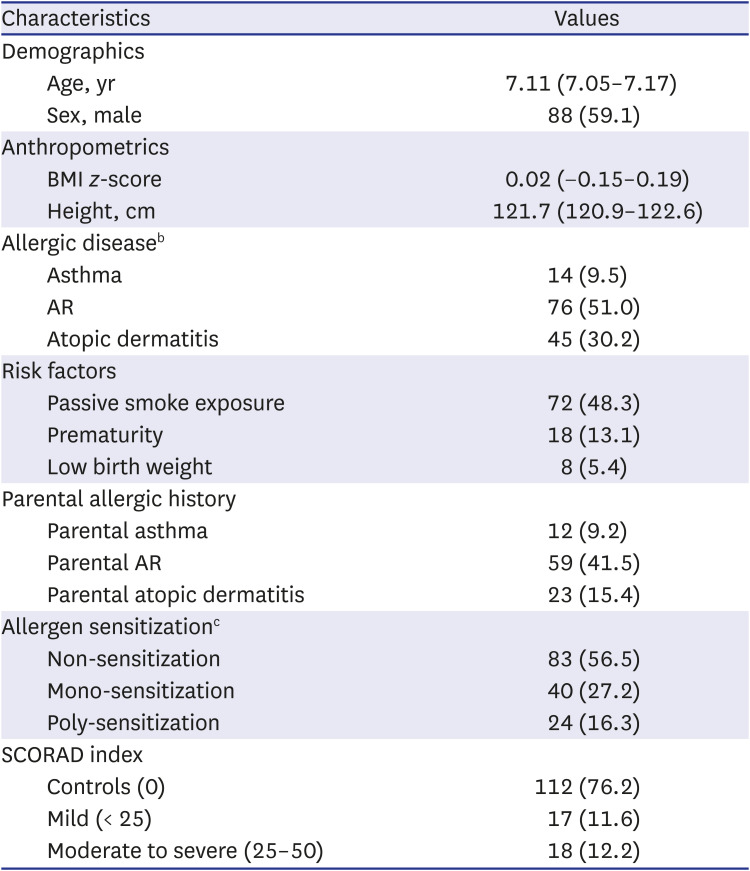
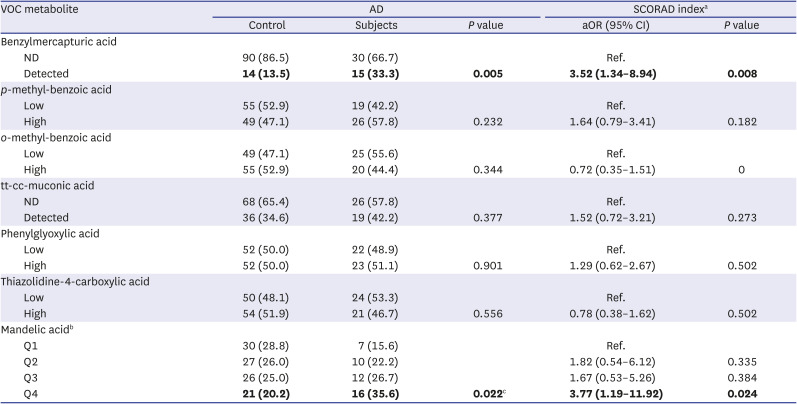
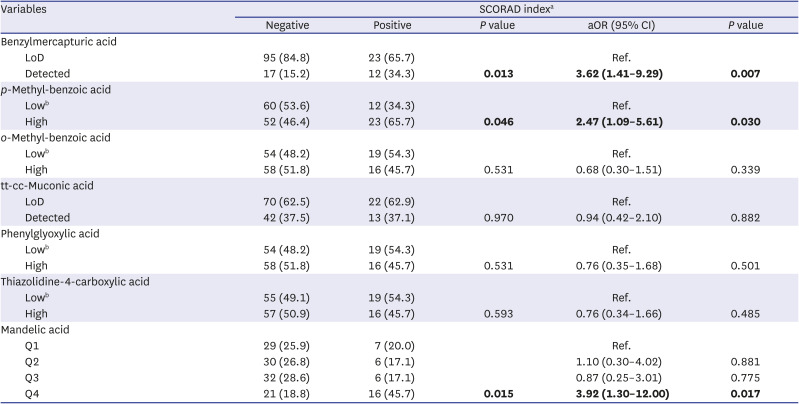




 PDF
PDF Citation
Citation Print
Print



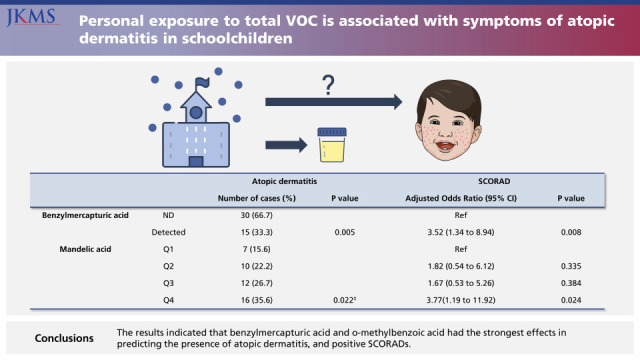
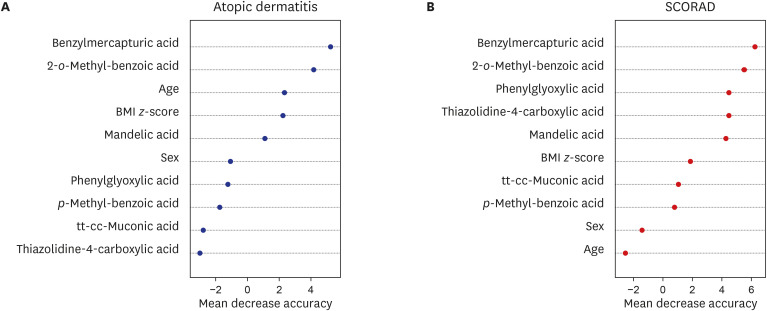
 XML Download
XML Download